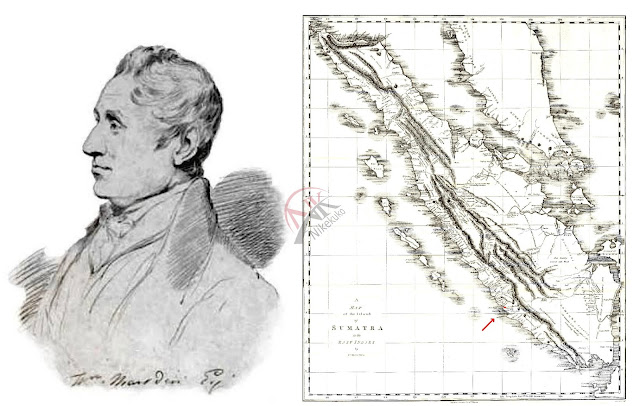The Rejang Tribe Is Known to the World for the First Time
 |
| William Marsden and map of Sumatra |
The History of Sumatra, written by William Marsden in 1783, has the earliest history of the Tubei sub-tribe. He recounts the existence of four sub-tribes within the Rejang tribe, including the Toobye. Marsden refers to these four sub-tribes as being from the territory that is now the Lebong region.
Name usage and inheritance patterns through time
The "Tubei City," which serves as the administrative hub for the Lebong district, is located in the Tubei subdistrict. From one of these Rejang petulai, he gets his name. The Tubei District Court, which replaces the Curup District Court's authority over the Lebong region, a component of the Rejang Lebong Regency, is similarly located in the heart of government.
A name used to describe the home and distribution region of the Rejang tribe as well as its territorial and cultural effects, such as badgers and Ulau Bioa, is "Tanah Rejang" (Rejang language: Tanêak Jang, Tanêah Hêjang). Currently, South Sumatra Province and Bengkulu Province share administrative control of the Tanah Rejang region. Due to this, the Rejang land in Bengkulu Province's administrative region is wider than it is in South Sumatra Province's administrative area.
According to William Marsden, a secretary to the president of Fort Marlborough, who wrote The History of Sumatra, Tanah Rejang is referred to as Redjang Country, which is another name for Rejang Country. The Rikung text researcher MA Jaspan uses the same phrase. According to Marsden, the Redjang tribe lives in a region known as the Redjang Country (Negeri Rejang).
Geografhic
The land of Rejang includes the lowlands, Bukit Barisan, and the coastal regions in North and Central Bengkulu. While in Bukit Barisan, two badgers—Luak Lêbong and Luak Uleu Musei—respectively serve as the foundation of Rejang culture. The region is well-known for its vegetable cultivation, coffee plantations, and rice fields. The three principal rivers that pass through this region are the Musi, Rawas, and Ketahun rivers. The Musei (Musi) dialect of Rejang is typically spoken by the Rejang people who reside along the Musi River. Those who reside at the mouth of the Rawas River then speak Rejang in either the Awês dialect or Abês (Rawas). The Rejang people, who speak a dialect of Lêbong, can be found living near the upper reaches of Ketahun. They are referred to as Ai people or upstream people as long as their sadêi (village) is upstream. And as they moved downstream, they were classified as Lot's people.
Is there a clan within the Rejang Tribe?
- John Marsden, British Resident in Lais, North Bengkulu, never used the term clan between 1775 and 1779. The term is also absent from William Marsden's major work on Sumatra's history, The History of Sumatra, published in 1783.
- Sir Thomas Stamford Raffles, the Deputy Governor-General in Bengkulu from 1818 to 1824, never used the term clan. The term is also absent from His Widow's Memoir of Sir Th. St. Raffles' Life and Public Services, published in 1820.
- JH Knoerle, Assistant Resident of the Netherlands in Bengkulu from 1831 to 1833, never used the term clan. The term is also absent from his note Aanteekeningen gehouden op een reis in de binnenlands van Sumatra enz. 1832, De Oosterling.
- In his Memorie van Ovsgrave', LO Westenenk, Dutch Resident in Bengkulu, 1915-1919, also stated that the names of the clans in Bengkulu and Rejang did not exist before the mid-nineteenth century AD.
